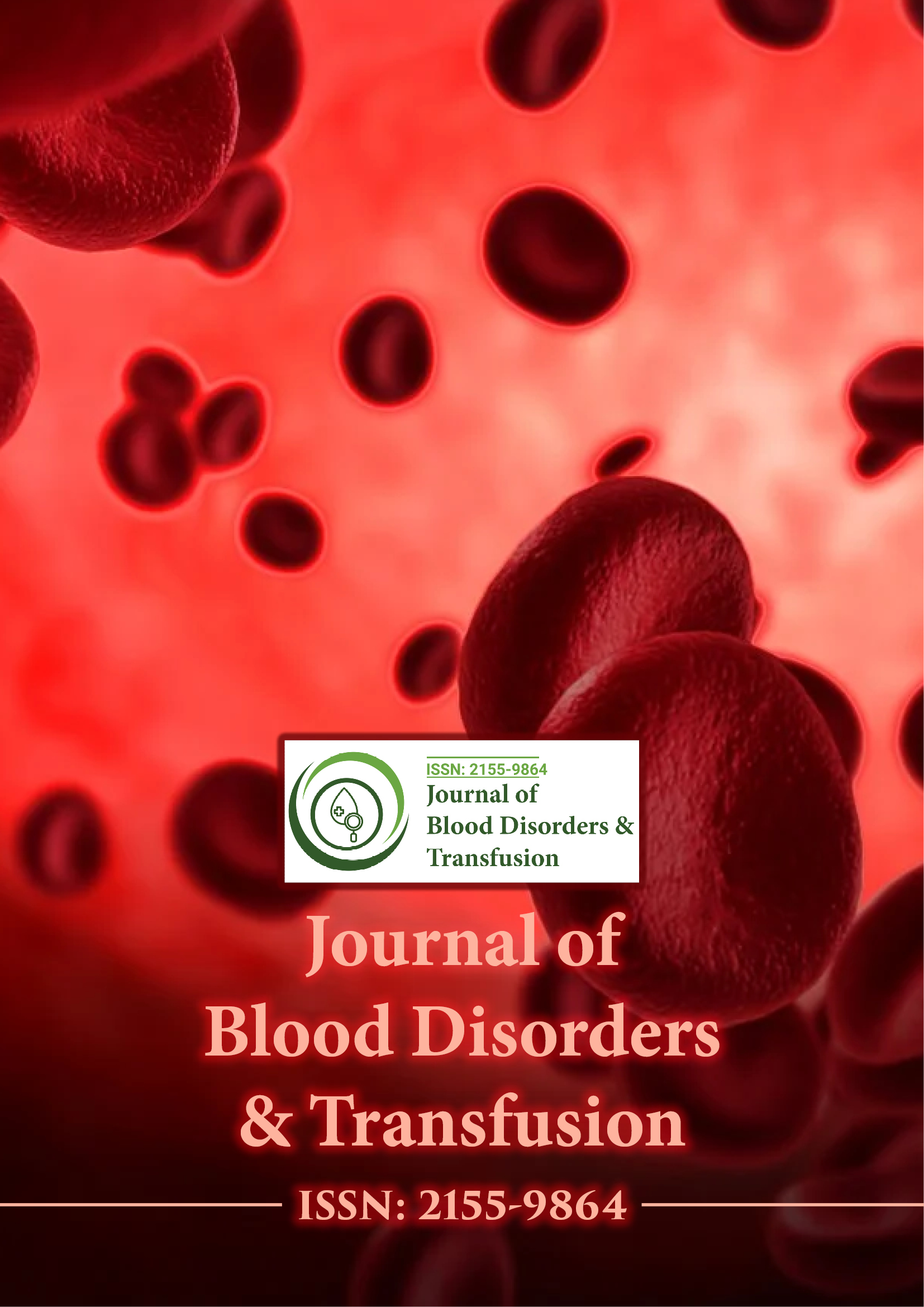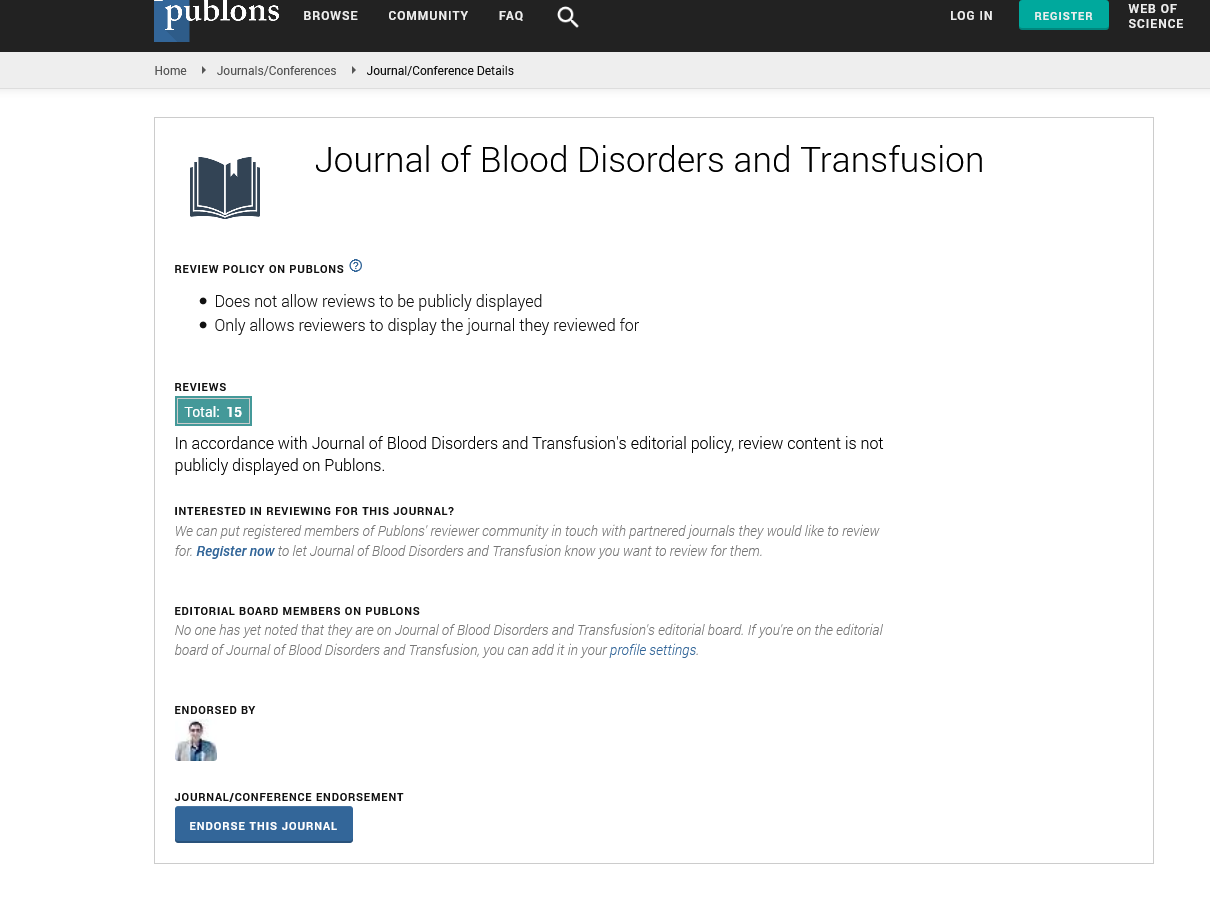Indexed In
- Open J Gate
- Genamics JournalSeek
- JournalTOCs
- Ulrich's Periodicals Directory
- RefSeek
- Hamdard University
- EBSCO A-Z
- OCLC- WorldCat
- Proquest Summons
- Publons
- Geneva Foundation for Medical Education and Research
- Euro Pub
- Google Scholar
Useful Links
Share This Page
Journal Flyer

Open Access Journals
- Agri and Aquaculture
- Biochemistry
- Bioinformatics & Systems Biology
- Business & Management
- Chemistry
- Clinical Sciences
- Engineering
- Food & Nutrition
- General Science
- Genetics & Molecular Biology
- Immunology & Microbiology
- Medical Sciences
- Neuroscience & Psychology
- Nursing & Health Care
- Pharmaceutical Sciences
Perspective - (2025) Volume 0, Issue 0
Insights into Blood Disorders Using Single Cell Techniques
Timothy Jones*Received: 28-Jan-2025, Manuscript No. JBDT-25-28781; Editor assigned: 31-Jan-2025, Pre QC No. JBDT-25-28781 (PQ); Reviewed: 14-Feb-2025, QC No. JBDT-25-28781; Revised: 21-Feb-2025, Manuscript No. JBDT-25-28781 (R); Published: 28-Feb-2025, DOI: 10.4172/2155-9864.25.S12.058
Description
Advances in cellular analysis have significantly transformed the study of blood disorders. Among the most influential developments in recent years is the rise of single cell technologies. These methods allow scientists to examine individual cells, revealing a level of detail that is not accessible through bulk analysis. This approach has deepened our understanding of hematological diseases, which often involve heterogeneous populations of cells with distinct molecular characteristics. The ability to detect variations among single cells is particularly relevant in blood diseases, where subtle differences can determine disease onset, progression and treatment response.
Hematological complexity at the cellular level
Blood diseases, particularly those involving the bone marrow, are characterized by variations in cell lineage, differentiation and function. Conditions such as leukemia, myelodysplastic syndromes and lymphomas involve abnormalities in specific subsets of cells. Traditional methods may overlook these distinctions, as they tend to focus on dominant cell types or require subjective interpretation under a microscope.
Single-cell analysis reveals a more detailed picture. For instance, in Acute Myeloid Leukemia (AML), different subpopulations of leukemia cells may coexist, each with distinct gene expression patterns and treatment sensitivities. Identifying these subpopulations is essential for designing effective interventions and avoiding resistance.
Insights into leukemia and lymphoma
Leukemia is among the most studied diseases using single cell technologies. Researchers have used scRNA-seq to dissect bone marrow samples, identifying previously unrecognized leukemia stem cell populations that are resistant to chemotherapy. These cells are often undetectable by conventional methods due to their low frequency but can be responsible for disease relapse. In Chronic Lymphocytic Leukemia (CLL), single cell analysis has shown how tumor cells interact with immune cells, suppressing normal immune responses and creating a favorable environment for disease persistence. This knowledge supports the development of therapies that restore immune function.
Drug response and resistance
One of the critical challenges in treating blood disorders is that not all patients respond the same way to therapy. Even within a single individual, different cells may respond differently to the same treatment. Single-cell approaches help map these differences, showing which subpopulations are sensitive or resistant to drugs.
This has implications for monitoring Minimal Residual Disease (MRD). By identifying rare cells that survive treatment, clinicians can adjust therapy before a full relapse occurs. Additionally, single-cell proteomics through mass cytometry allows real-time monitoring of changes in protein signaling pathways following drug exposure.
Immune landscape in hematological malignancies
The immune system plays a central role in the development and progression of blood cancers. Immunotherapies, including monoclonal antibodies and CAR-T cell treatments, depend on an accurate understanding of immune cell behavior. Single cell analysis provides a detailed map of the immune landscape in patients, identifying exhausted T cells, dysfunctional natural killer cells and immunosuppressive macrophages.
These discoveries have led to the identification of biomarkers for selecting patients most likely to benefit from specific immunotherapies. Additionally, single-cell techniques can monitor immune recovery after bone marrow transplantation, ensuring timely detection of complications such as graft-versus-host disease.
Clinical integration and challenges
While research applications of single-cell technologies are expanding rapidly, translating these findings into clinical practice remains a work in progress. Standardization of protocols, validation across different populations and regulatory approval are required for widespread adoption. Additionally, the high cost and complexity of data analysis remain barriers in some healthcare settings.
Despite these challenges, several clinical trials are already incorporating single-cell data to stratify patients and guide treatment decisions. As more studies confirm the diagnostic and prognostic value of these methods, it is likely that single-cell technologies will become an integral part of hematology labs.
Citation: Jones T (2025). Insights into Blood Disorders Using Single Cell Techniques. J Blood Disord Transfus. S12:058.
Copyright: © 2025 Jones T. This is an open-access article distributed under the terms of the Creative Commons Attribution License, which permits unrestricted use, distribution, and reproduction in any medium, provided the original author and source are credited.

